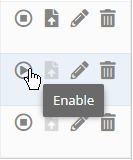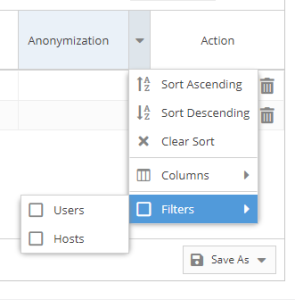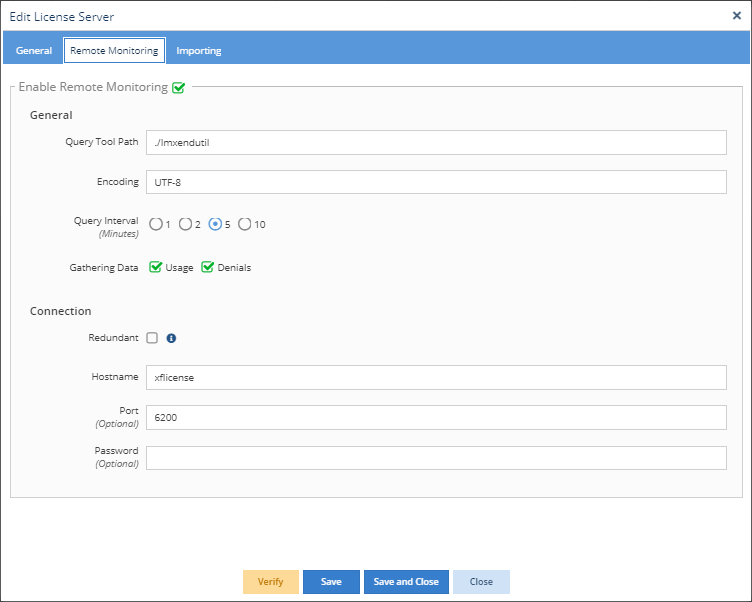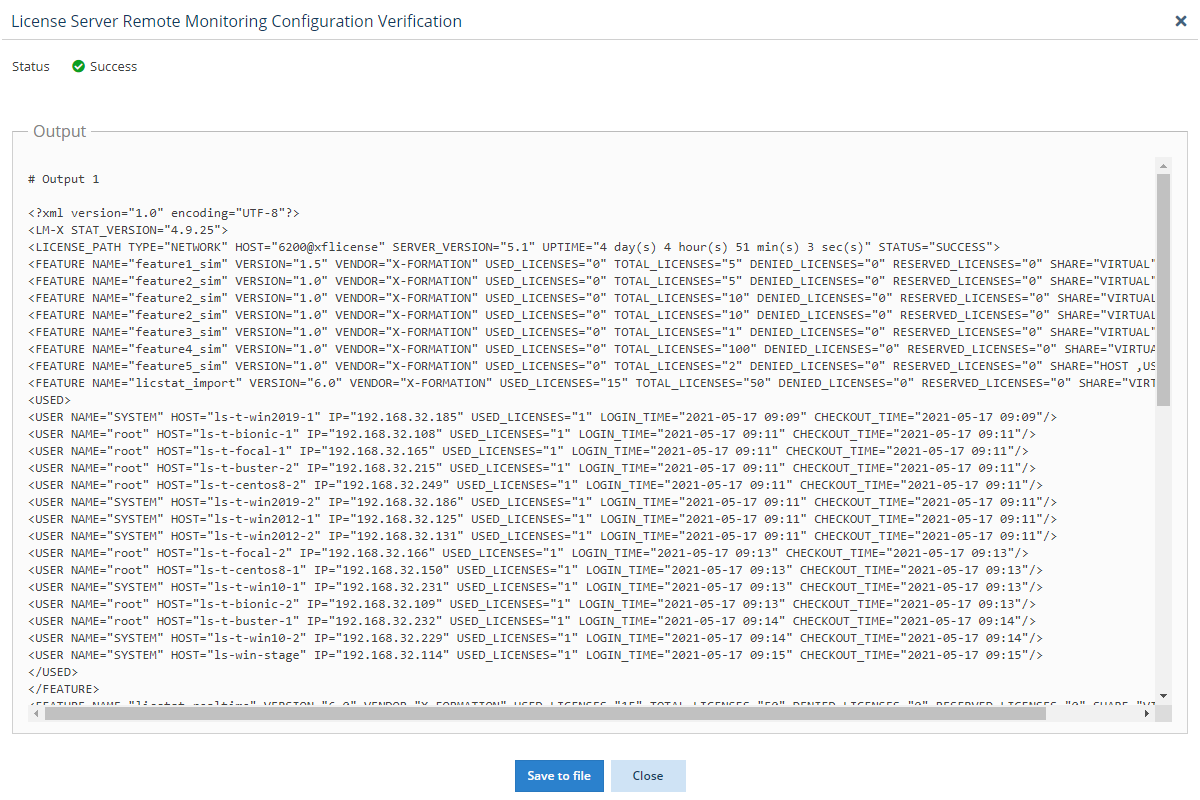| Setting | Description |
|---|
| General tab |
| General settings |
| Name | The name for the license server that will be displayed in License Statistics. This can be any descriptive, unique name that helps you identify the license server in License Statistics pages.
|
| Enabled | Check this box to enable monitoring for the license server. When this box is not checked, monitoring for the license server is disabled. Only enabled license servers are counted in the number of license servers you can monitor according to your License Statistics license agreement. You can add any number of disabled license servers. If you have reached your limit of license servers you can monitor, you can disable any license servers that you do not need to monitor and enable the license servers you do need to monitor. |
| License Manager Type | The type of license manager you are using for the license server. This selection list includes all supported license managers. You can begin typing the license manager type to limit the selection list to entries that contain the characters you type.
If you select Custom as the license manager type, you must specify the path to your custom XML file in the File Path field under Connection settings. See Supporting a custom license server for information on adding a custom license server. If you select Custom Application as the license manager type, you must set up custom application monitoring. |
| Description | An optional description for the license server. |
| Vendor settings |
| Name | The vendor name read from the license server output. Read-only field is set to the proper value on the first query. |
 Daemon Name Daemon Name
| An optional vendor daemon name for the license server. This entry cannot contain spaces or special characters, except underscores, hyphens and periods. Applicable only for FlexNet, RLM, CodeMeter and OLicense license manager types. FlexNet license servers are configured with case-sensitive names by default, so make sure the vendor name uses the correct case when configuring a FlexNet license server. An error in the vendor name may cause problems with License Statistics usage monitoring. See "Failure to find licenses for FlexNet license server" in FLEXlm and FlexNet license server issues for more information.
For CodeMeter license server use Firm Code. |
Display Name
| An optional name to display for the vendor in reports. |
| Gathering settings |
 Anonymous Usernames/ Hostnames Anonymous Usernames/ Hostnames
| Make users and/or hosts anonymous in the database and reports (normally used to protect users for legal reasons, as is required in some countries). When enabled: - Usernames will be hashed, and LDAP details will be removed
- Hostnames and IP addresses will be hashed
Note that you can set this additional option only when adding a license server; you cannot edit this option after adding the server. If you do not choose to anonymize data for the license server, note that you can perform "on-demand" data anonymization of historical data as needed.
|
| Feature Versioning | Enable Feature Versioning for the supported license server types. Note that you can set this additional option only when adding a license server; you cannot edit this option after adding the server. Currently this option works with the following license servers: - LM-X License Manager
- IBM LUM
- FlexNet
- Reprise License Manager (RLM)
- Sentinel RMS
- License4J
- TLM
|
| Toggle on to enable Collections. Applies only to Autodesk and Dassault license managers. Note that this setting cannot be changed for Autodesk license servers after the license server has been created. However, this setting may be enabled/disabled for Dassault at any time. |
| Remote Monitoring tab |
To view remote monitoring settings, toggle on Enable Remote Monitoring at the top of the Remote Monitoring tab (enabled by default). |
| General settings |
 Query Tool Path Query Tool Path
| The path to the license manager's query tool defaults to license_statistics_installation_directory/query_tool_default_name, where the query tool default name is specific to the license manager being used, as follows: | License manager | Query tool default name |
|---|
| LM-X | lmxendutil | | BETA LM | beta_lm_stat | | Dassault | DSLicSrv | | EPLAN LM | ElmMonitor | | FlexNet | lmutil | | GHS | lic_find_licenses | | GNS | licstat | | IBM LUM | i4blt | | LICMAN | licman20_appl | | LS-Dyna | lstc_qrun | | MathLM | monitorlm | | OLicense | olixtool | | RLM | rlmutil
| | Sentinel RMS | lsmon | | TLM | licdstat |
Edit the path if needed, and make sure the query tool is in the specified path. Important: The query tool executable (and the path provided in the License Statistics UI) must be local. If you edit the path, ensure that the query tool executable is located on the same machine as the License Statistics installation. Query Tool Path is not applicable when using the Custom, Autodesk, JetBrains, License4J, oXygen and Zoo license manager types.
|
| Encoding | Changes the encoding used by License Statistics when analyzing data from a license server. By default, this is set to UTF-8. For a list of supported encodings, see: https://docs.oracle.com/en/java/javase/13/intl/supported-encodings.html |
| Locale | Applies only to Altium license manager type. This optional setting can be used to change the locale assumed by License Statistics when parsing output from the server. This setting is empty by default, and should be specified only if necessary. A list of available locale values can be found at https://www.oracle.com/java/technologies/javase/jdk17-suported-locales.html, under the Language Tag column. |
| Query Interval | Time in minutes between each license server query. Choose between 1, 2, 5 (default), 10, 15 and 20 minutes. |
| Gathering Data | Toggle on data gathering for usage and/or denials (choices depend on license manager type selected). |
| EPLAN Bundle | Applies only to EPLAN LM license manager type. See EPLAN Bundles for more information. |
| Connection settings |
Redundant | Check this box to specify that redundant servers are being used. For example, for LM-X, you would toggle on the Redundant setting if you are using a HAL (High Availability License) license server. When Redundant is checked, you must enter the hostname and port number for all three servers. For LM-X, the server order is indicated as "#1 HAL server," "#2 HAL server," and "#3 HAL server." The Redundant setting is applicable only for LM-X, FlexNet, BetaLM, Dassault, IBM LUM and GNS license manager types. |
| Secured | Check this box to force HTTPS connection for servers using HTTP monitoring. The Secured setting is applicable for oXygen, JetBrains, Zoo and CodeMeter license managers only. |
Hostname
| The license server hostname. This entry must be a hostname or domain value, and cannot contain spaces, special characters (underscores, hyphens and periods are allowed), or protocols (e.g., "http(s)://"). |
| File Path | For Custom license servers, the Hostname field (described above) is replaced by a "File Path" field, which is used to provide the path to the file to be monitored. |
| Port | The license server port number, which may have a default setting depending on the license manager selected, as follows. | License server | Port number |
|---|
| LM-X | 6200 | | RLM | 5053 | | Dassault | 4084 | | GHS | 2009 | | GNS | 7200 | | Altair | 6200 | | JetBrains | 8080 | | License4J | 16090 | | Oxygen | 8080 | | TLM | 9090 | | AIS/PLS | 9780 |
The Port number setting is not applicable when using the IBM LUM, LICMAN, Sentinel RMS, MathLM, and Custom license manager types.
|
| Login | The username to access protected resources. This setting is applicable only for JetBrains and oXygen license manager types. |
| Password | The password to access protected resources.. This setting is applicable only for LM-X, Dassault, JetBrains and oXygen license manager types. |
| Importing tab |
To enable importing the logfile using the License Statistics UI or API, toggle on Enable Importing at the top of the Importing tab. There are no settings for the Importing tab. |
| End User Monitoring tab |
| This tab currently applies only to the Autodesk license manager type. To view End User Monitoring settings, toggle on Enable End User Monitoring at the top of the End User Monitoring tab. |
| Agent Groups | Agent Group(s) that will be used to automatically monitor Autodesk applications on their hosts. This setting is applicable only for the Autodesk license manager type. |
Data Source Status

Anonymization


